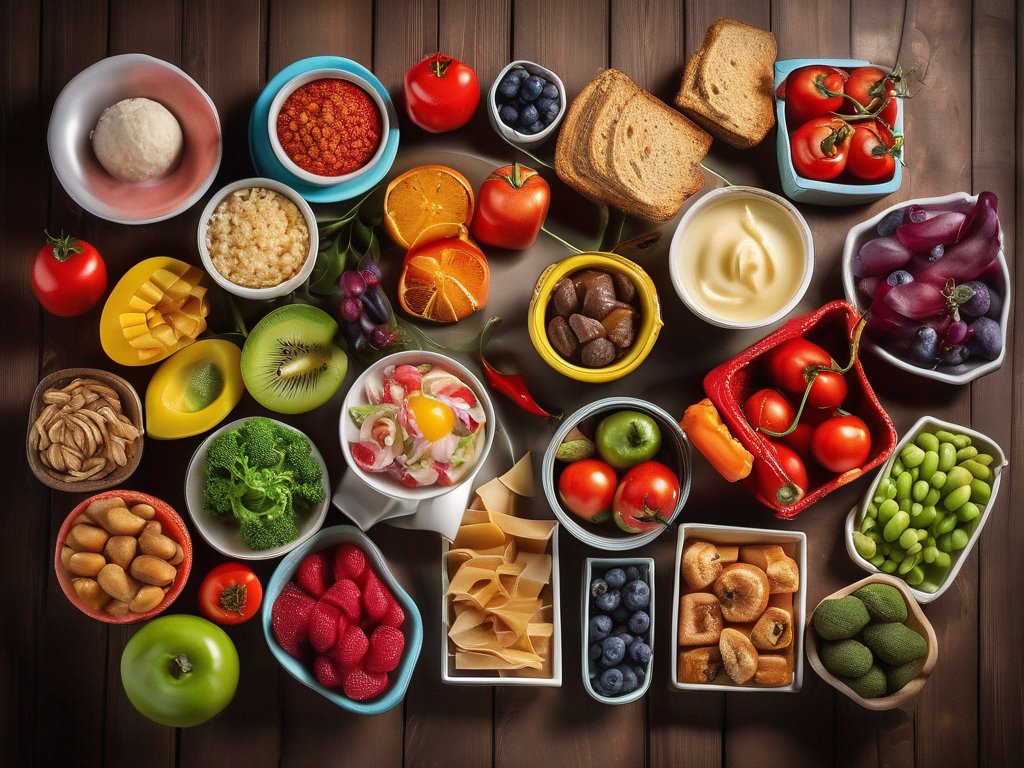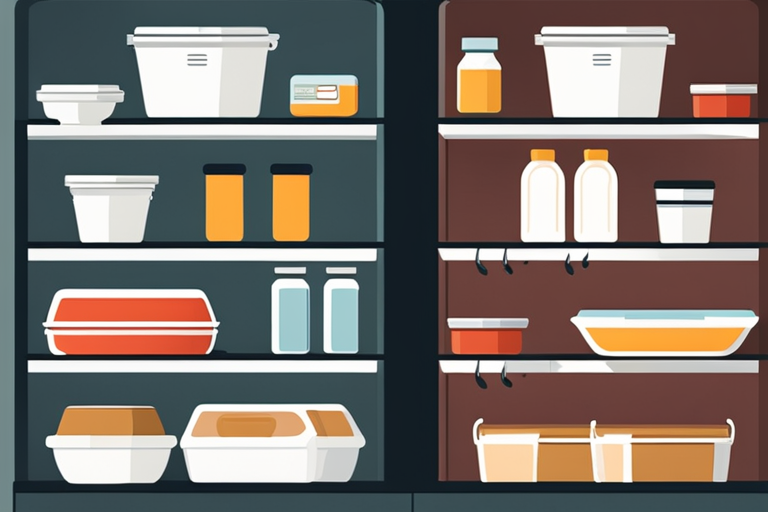
The Ultimate Guide to Food Pantry Food Safety and Storage
Get Your Free Food Safety Cheat Sheet
30 most common foods with instant answers. Print it and stick it on your fridge—completely free!
The Ultimate Guide to Food Pantry Food Safety and Storage
In today's world, food pantries play a crucial role in providing essential nutrition to individuals and families in need. However, ensuring the safety and proper storage of food in a pantry is of utmost importance to prevent foodborne illnesses and ensure the quality of food items distributed. In this comprehensive guide, we will delve into the best practices for food pantry food safety and storage to help you maintain the highest standards of hygiene and quality.
Importance of Food Safety in Food Pantries
Food safety is a critical aspect of managing a food pantry efficiently. By following proper food safety guidelines, food pantries can prevent the risk of contamination and ensure that the food distributed is safe for consumption. Here are some key reasons why food safety in food pantries is essential:
Benefits of Proper Food Safety in Food Pantries
-
Protecting Public Health: Ensuring food safety in food pantries helps prevent foodborne illnesses and protects the health of individuals who rely on these services.
-
Maintaining Quality: Proper food safety practices help maintain the quality and freshness of food items, ensuring that they are nutritious and safe to consume.
-
Building Trust: By prioritizing food safety, food pantries can build trust with their clients and the community, showcasing their commitment to providing safe and healthy food options.
Food Storage Guidelines for Food Pantries
Proper food storage is key to maintaining the quality and safety of food items in a pantry. Here are some essential guidelines to follow when storing food in a food pantry:
Temperature Control
-
Refrigeration: Store perishable items such as dairy products, meats, and fresh produce in refrigerators set at 40°F or below to prevent bacterial growth.
-
Freezing: Freeze items that are not going to be used immediately to extend their shelf life and maintain their quality.
Organization
-
First In, First Out (FIFO): Implement a FIFO system to ensure that older food items are used first, reducing the risk of food spoilage.
-
Proper Labeling: Label all food items with their expiration dates and contents to track their shelf life and prevent confusion.
Storage Containers
-
Airtight Containers: Store dry goods such as grains, cereals, and snacks in airtight containers to prevent pests and maintain freshness.
-
Transparent Containers: Use transparent containers to easily identify food items and monitor their condition without opening the containers.
Food Safety Practices for Food Pantries
In addition to proper storage, implementing food safety practices is crucial to prevent contamination and ensure the safety of food items. Here are some essential food safety practices for food pantries:
Cleaning and Sanitization
-
Regular Cleaning: Clean shelves, countertops, and storage areas regularly to remove dirt, spills, and debris that can attract pests and lead to contamination.
-
Sanitization: Use food-safe sanitizers to disinfect surfaces and equipment to eliminate harmful bacteria and viruses.
Personal Hygiene
-
Handwashing: Encourage staff and volunteers to wash their hands frequently with soap and water before handling food items to prevent the spread of germs.
-
Gloves: Provide disposable gloves for handling food items to reduce the risk of cross-contamination.
Pest Control
-
Sealing Cracks and Gaps: Seal any cracks or gaps in walls, floors, and ceilings to prevent pests such as rodents and insects from entering the pantry.
-
Regular Inspections: Conduct regular inspections for signs of pest activity and take immediate measures to address any infestations.
Conclusion
Maintaining food safety and proper storage practices in a food pantry is essential to protect public health, ensure food quality, and build trust with clients. By following the guidelines outlined in this comprehensive guide, food pantries can create a safe and hygienic environment for storing and distributing food items to those in need. Remember, food safety is everyone's responsibility, and by prioritizing it, we can make a positive impact on the well-being of our communities.

Authoritative Food Safety References
These agencies and university labs inform every tip and health precaution we publish.
USDA FoodKeeper – Cold Storage Guidelines
Official refrigerator, freezer, and pantry timelines maintained by the U.S. Department of Agriculture.
Visit USDA FoodKeeperFDA Produce Safety Rule & Grower Guidance
Field-to-fridge handling practices that prevent contamination of fruits, vegetables, and leafy greens.
Visit FDA Produce SafetyCDC Foodborne Illness Prevention Hub
Surveillance-backed guidance on pathogens, symptoms, and steps to reduce foodborne illness risk.
Visit CDC Food SafetyUC Davis Postharvest Technology Center
University research detailing optimal storage atmospheres for produce after harvest.
Visit UC Davis PostharvestPenn State Extension – Home Food Preservation & Safety
Peer-reviewed extension bulletins on safe canning, chilling, and reheating practices.
Visit Penn State ExtensionHow can I prevent pests from infesting my pantry?
What are the best practices for organizing a food pantry for safety?
How can I tell if food in my pantry has gone bad?
What are the recommended storage temperatures for a pantry?
Get Your Free Food Safety Cheat Sheet
30 most common foods with instant answers. Print it and stick it on your fridge—completely free! Want more? Upgrade to the complete guide with 70+ foods.
Scan your food directly and get instant safety info using our AI-powered camera feature.